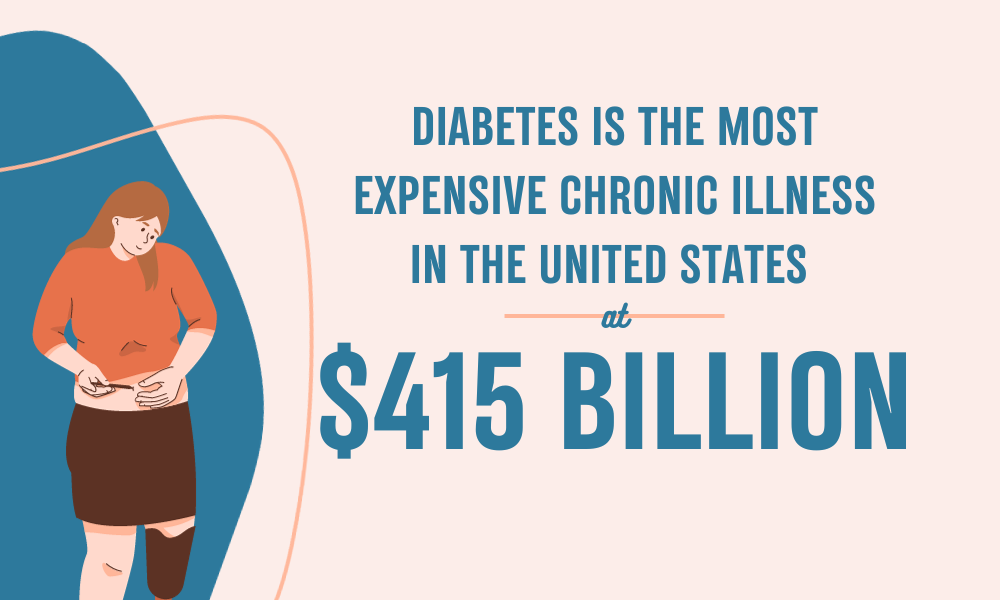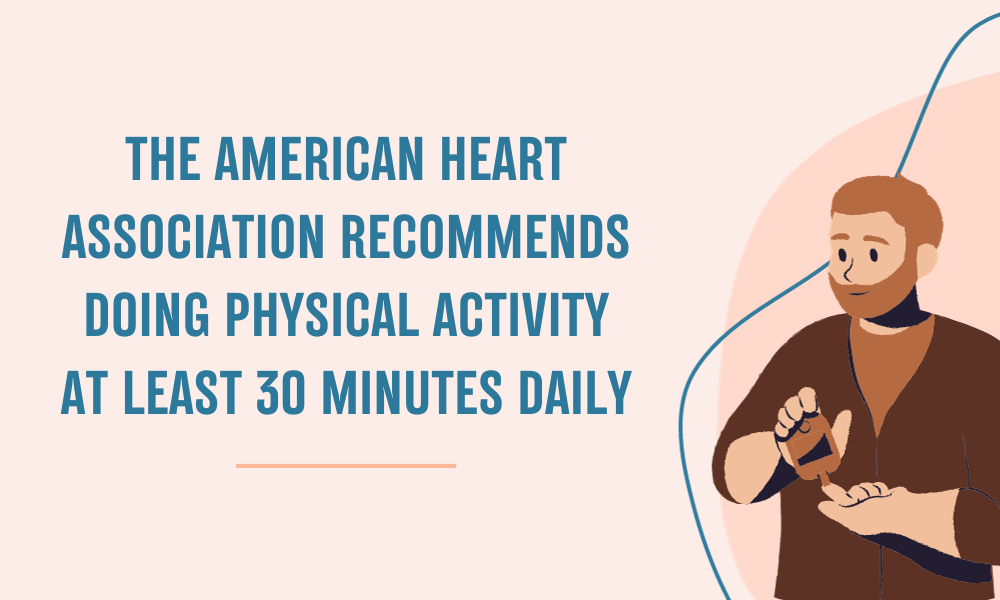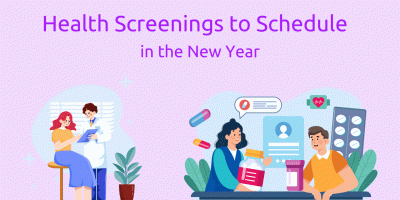
Cardiometabolic Health in the Modern Workplace
With less than 7% of Americans in optimal cardiometabolic health, the urgency for workplace interventions has never been clearer.

More than 10% of adults live with diabetes, yet only half are aware of this.
Data from the International Diabetes Foundation (IDF) projects that by 2045, this number will reach 783 million, or one in every eight adults globally.
Even more concerningly, an additional 9.1% live with prediabetes, a condition that increases the risk of a Type 2 Diabetes diagnosis, and this will likely increase to 10% by 2045.
Diabetes is also the most expensive chronic illness in the United States.
In fact, statistics show that the global health expenditure reached $966 billion, with North America accounting for 42.9% of this, or $415 billion.
The silver lining is that this condition and its ripple effects can often be prevented through healthy lifestyle changes, which is the focus of National Diabetes Awareness Month. Through educational campaigns and resources, many use this occasion to bring attention to this disease and promote healthy solutions.
In the workplace, this is an excellent opportunity to educate the workforce on diabetes and promote their well-being.

Every November, we commemorate National Diabetes Awareness Month to raise awareness about a condition that affects one-tenth of the population.
While it was initially established in 1975, President Ronald Reagan declared November to be the official Diabetes Awareness Month in 1981. That same year, the American Diabetes Association (ADA) set a campaign themed We Teach Diabetes Survival, one of many to follow.
World Diabetes Day also takes place around this time on November 14th, expanding these efforts globally since 1991. This day also commemorates the birthday of Sir Frederick Banting, the co-discoverer of insulin, a lifesaving medicine for diabetic patients.
Advocacy organizations, healthcare professionals, employers, and other parties have joined forces these past few decades to educate, support, and take proactive measures.
Through different initiatives and campaigns, their goal is to raise public awareness of this chronic illness and its risks, offer resources, and serve as a platform for those with diabetes to share their stories.

Get Diabetes Under Control: Reducing Healthcare Expenses & Supporting a Healthier Workforce with Virtual Primary Care
The Centers for Disease Control and Prevention (CDC) defines diabetes as a chronic condition that affects the creation or use of insulin. This hormone helps the body turn food into energy, and failure to do so can manifest in four different ways:
Prediabetes
This happens when blood sugar levels are elevated but not high enough for a Type 2 diagnosis. However, prediabetes increases this risk and can enhance the probability of heart disease and stroke. The CDC reports that more than one in three people in the U.S. have prediabetes, and 80% aren’t aware. Fortunately, healthy lifestyle changes can reverse this condition.
Type 2 Diabetes
Caused by an improper use of insulin in the body, this is the most common type of the disease, affecting between 90% and 95% of all diabetic patients. Its development happens over many years and may sometimes be asymptomatic.
Research also shows that Type 2 Diabetes can lead to an increased risk of heart disease. Although a severe condition, healthy habits, including physical fitness and good nutrition, can delay or prevent it.
Type 1 Diabetes
The most severe onset of the disease is Type 1, accounting for the remaining 5-10% of all diabetes cases. It develops quickly and affects people of all ages. Unfortunately, those diagnosed with this condition must take insulin daily because their body cannot produce it.
Gestational Diabetes
Unlike the other types, this one is specific to pregnant women.
Although the condition often disappears after birth, it should be controlled to reduce the risk of other health problems. Gestational diabetes also increases the risk of developing Type 2 Diabetes for the baby and the mother later in life.
Seeing how these different types and onsets of the disease require different approaches is why disability awareness is crucial. Understanding the risks and, even more importantly, how to prevent them is vital to ensuring a healthier workforce.
For employers, this means being knowledgeable about the disease and ensuring their employees are, too.
In anticipation of Diabetes Awareness Month, they can promote healthy lifestyle changes in the workplace as a proactive measure to minimize the risks and create a healthier workforce.
Although diabetes rarely impacts employees’ ability to do their jobs, it can still interfere with their performance. For example, hypoglycemia or low blood sugar, which is often related to diabetes treatment, can cause fatigue, nausea, anxiety, headaches, etc., affecting the person’s productivity and concentration at work.
Moreover, diabetic patients need regular medical checkups, which could increase absenteeism.
Mitigating these health risks and navigating the challenges they pose in the workplace requires a structured and comprehensive wellness initiative. This includes access to health care services, promoting healthy lifestyle changes, and raising awareness.
Additionally, employees with diabetes can play an active role in managing their condition and communicating their needs to their employers to ensure a successful and accommodating work experience.
According to the American Heart Association (AHA), a healthy lifestyle is vital in managing diabetes. Moreover, it can keep other health issues under control, including high cholesterol and blood pressure.
Thus, a good starting point is making healthy dietary choices.
For example, the AHA suggests reducing carbohydrates, fatty and processed meats, alcohol, sodium, and saturated fats.
Instead, a healthy diet should include fiber-rich food, lean meats, fruits and veggies, low-fat dairy, and more. Studies also show that legumes, like beans and lentils, can lower the risk of heart disease in diabetic patients.
Unfortunately, lack of accessibility, time constraints, or higher costs of nutritious food hinder practicing healthier habits in the workplace. Cafeterias or vending machines usually offer food that people with prediabetes or diabetes should avoid. Yet, these are often more convenient, readily available, and cheaper.
Depending on the company, promoting healthy eating habits in the workplace can be anything from joining Meatless Monday to enabling healthy snack and breakfast options in cafeterias, more flexible lunch breaks, and subsidized meals.
Another essential aspect is regular exercise.
It can regulate weight, blood pressure, and cholesterol. It also improves anxiety and a person’s overall well-being. Thus, the AHA recommends doing this at least 30 minutes daily, several days a week, to prevent the onset of the disease.
For diagnosed patients, Harvard Health reports that all forms of exercise are equally beneficial at lowering hemoglobin A1C (HbA1C) values – the indicators of diabetes. Moreover, the article reveals that diabetic patients who walked at least two hours per week had a lower risk of dying of heart disease than sedentary patients. The more they exercised, the lower this risk was.
In women, this contrast was up to 40%.
It’s safe to assume that promoting regular exercise at work is crucial in preventing and managing diabetes among employees.
Group exercise classes, fitness challenges, activity trackers, or access to on-site fitness facilities are all initiatives employers can take to promote healthy lifestyle changes in their workforce.
Beyond diabetes, studies also show moderate exercise can increase work performance while decreasing absenteeism. The British Heart Foundation even reveals that companies see around $5 ROI for every dollar they invest in their worker’s physical and mental health.
Therefore, tackling diabetes and its detrimental effects should be an all-around wellness approach at work, focusing on supporting mental health just as much as physical.

Research exploring the effects of stress on this disease reveals that physical and psychological stress could lead to Type 2 Diabetes.
The science behind it is that stress triggers the release of adrenaline and cortisol, which interfere with the proper creation and use of insulin in the body. Our “fight or flight” response to a stressful situation increases blood sugar, inducing hyperglycemia. Although it’s a common reaction, stress can cause insulin resistance when it becomes chronic.
As for those who already have a diagnosis, the CDC reports that 33% to 50% of diabetic patients have diabetes distress, a term for when patients feel frustrated and overwhelmed by the conditions.
With work being a significant stressor for 62% of employees, it’s essential to address this correlation in the workplace.
What employers can do during and beyond Diabetes Awareness Month is to promote a healthier and less stressful environment. While this largely depends on the needs of employees, emphasizing the importance of mental health, work-life balance, and stress management can help significantly. This includes strategies like:
Bringing attention to the matter is what Diabetes Awareness Month is all about in the workplace and beyond. It’s also an opportunity to introduce these healthy lifestyle changes and foster a workplace wellness culture.
This includes empowering the workforce to take control of their well-being by facilitating discussions and sharing valuable information about diabetes, including risk factors, symptoms, and management.
Beyond educational workshops, providing nutritious snacks in the office, and organizing group fitness activities, companies can also introduce diabetes programs as part of their employee benefits.
Tailored specifically to the workforce’s needs, these programs aim to improve employee health and well-being while reducing healthcare costs for employees and employers.
Diabetes programs are targeted initiatives to raise awareness, prevent, manage, and support individuals living with diabetes. They are usually implemented within workplaces, healthcare systems, or communities.
Exploring them from a workplace aspect, diabetes programs promote healthier lifestyle choices in employees, from nutrition to exercise. Depending on the employer, they can offer regular health screenings to identify diabetes or prediabetes and provide access to resources like counseling, support groups, or medical services for those affected by this chronic condition.
By using proactive measures, they can also reduce healthcare costs associated with this disease.
A study, Effectiveness of workplace diabetes prevention programs: A systematic review of the evidence, delved into the impact of these initiatives on employees with or at risk of Type 2 Diabetes.
Focused on promoting healthier eating habits, physical activity, and self-management of diabetes and cardiovascular risk factors, the findings show great potential in the prevention of diabetes and its complications.
The study also emphasizes the need for employer awareness of the benefits of supporting such programs and the strategies to motivate the workforce to participate.
Beyond diabetes programs and general health initiatives, employers can offer additional resources to enhance their employees’ diabetes awareness and well-being. These solutions range from Employee Assistance Programs (EAPs) and diabetes-specific support groups to health screening, on-site clinics, and preventative services for employees and their families.
Regardless of their approach, all solutions should be tailored to the real needs of the workforce. Therefore, employers can partner with diabetes and health organizations to ensure this while creating their wellness strategy.
For example, the Association of Diabetes Care & Education Specialists (ADCES), founded in 1973 by the American Association of Diabetes Educators, offers courses and training on how to build CDC-recognized lifestyle change programs and other helpful tools and resources for employers and employees.
Ultimately, Diabetes Awareness Month presents a unique opportunity for employers to contribute to decades of effort to subside this disease through healthy lifestyle choices. By becoming a platform for change and fostering an environment encouraging physical activity, healthy eating, and overall wellness, they can make a significant difference in their employees’ present and future well-being.
Disclosure: Some of the products featured in this blog post may come from our partners who compensate us. This might influence the selection of products we feature and their placement and presentation on the page. However, it does not impact our evaluations; our opinions are our own. The information provided in this post is for general informational purposes only.
Content Writer at Shortlister
Browse our curated list of vendors to find the best solution for your needs.
Subscribe to our newsletter for the latest trends, expert tips, and workplace insights!

With less than 7% of Americans in optimal cardiometabolic health, the urgency for workplace interventions has never been clearer.

As the new year approaches, why wait for symptoms to appear before taking action? Which screenings can transform not only your personal well-being but also the vitality of your workplace?

As we explore the value of regular health screenings, cost-effectiveness emerges as a major benefit for individuals, companies, and society.

Workplace equity is more than a buzzword—it’s a lifeline in the fight against diabetes and the health gaps shaped by where we live, work, and grow.
Used by most of the top employee benefits consultants in the US, Shortlister is where you can find, research and select HR and benefits vendors for your clients.
Shortlister helps you reach your ideal prospects. Claim your free account to control your message and receive employer, consultant and health plan leads.